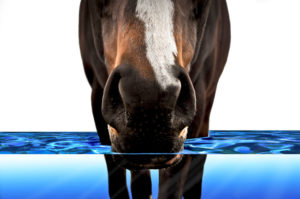
Whether you keep your horse inside a barn, or he lives outside in a pasture with his buddies, your horse is going to need access to clean, fresh water at all times. Depending on his size, his activity level and also the weather conditions in your area, the amount of water that your horse consumes each day is going to vary. During the summer months when it’s typically hot or humid, your horse is probably going to drink a lot more water than he would during the cold, winter months. On average, though, your horse could drink anywhere between 5 to 10 gallons of water each day. So you want to be sure that you give your horse a reliable water source that provides him with clean water every day. This is very important for his overall health.
As you’re trying to decide which is the best type of waterer to purchase for your horse, you’ll want to think about your specific situation and needs. Take a notepad and walk around your property. Look around and try to identify several locations that are convenient for both you and your horse year round. Try to find areas that are near a water source (such as a water hose) and in a spot that your horse has access to all the time.
Does your horse need Joint Support?
You might find that portable water buckets are the best solution for you. Or maybe you’ll want to set up several water troughs in your horse’s pasture area. Perhaps you like the idea of installing automatic waterers inside each horse’s stall. There are lots of different options to choose from. So here’s some information to help you decide which is the best type of horse waterer for your barn or property.
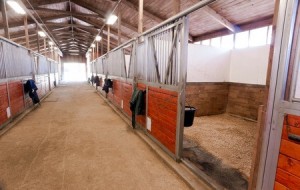
Portable Water Buckets
Portable water buckets are among the most popular type of horse waterers available, since they’re easy to carry, easy to clean and you can actually see how much water your horse is drinking each day.
These types of buckets, which are made of plastic or a rubber-polyethylene blend, come in a variety of sizes and colors. The buckets you select need to be both impact and crack resistant and made of a durable material. Some water buckets are completely round, while others are round in the front and sides, but flat in the back. Buckets that are flat in back can lay flush against the wall without twisting and turning. Round buckets are usually good for general water use and are great in turnout or pasture areas. Flat back buckets are perfect for inside your horse’s stall if you want them flat against the wall or fencing.
Portable water buckets typically have a lightweight metal handle attached. This makes it easy to carry and move in and out of your horse’s stall. The bucket handle should be smooth and free from rough edges. Also, to help protect your horse from injury, the handle ends need to be covered with soft rubber tips. If you can feel any sharp points on the bucket handle, there’s a chance that your horse will also find them and he could potentially injure himself.
Installation
If you decide you want to use a portable water bucket, you’ll need to secure it in a safe location where your horse won’t be able to step into it or tip it over. You should place the bucket low enough so that your horse can drink with his head in a natural position. At the same time, you don’t want the bucket too low where your horse could kick his bedding into the water. Once you’ve found the right height, you’ll want to mount it to the wall or fencing so that it’s secure and he won’t be able to knock it over. You can do this by using fasteners that are free of gaps or rough edges.
Cleaning
Portable water buckets are easy to clean – you’ll need to remove any algae or dirt that’s accumulated inside by regularly emptying and scrubbing the inside of the bucket with a stiff brush. You can then thoroughly rinse it out and refill it with fresh, clean water for your horse to drink. If you keep the water bucket inside your horse’s stall, you’ll need to take the bucket out of his stall in order to empty and clean it. Perhaps you have some plants or trees nearby – you can empty your horse’s water bucket and water your plants at the same time!
Winter Buckets
If you live in an area where it gets below freezing in the winter, you might want to consider purchasing either a heated water bucket or an insulated water bucket.
Heated Water Buckets
Heated water buckets are especially useful in colder climates and many are constructed to withstand subzero temperatures. These buckets contain special heating elements built inside the bucket walls, making them effective in heating water in the winter. This unique design will warm the water up just enough so that it won’t freeze. Heated water buckets come with an electrical cable (usually around 6 feet in length) that is attached in the back. You can then plug the bucket cord directly into a nearby electrical outlet. Heated buckets do not automatically refill, so you’ll need to manually fill them up with water throughout the day.
Before installing a heated bucket, it’s extremely important that you’ve set up your barn properly so that it can safely handle electrical appliances. You’ll need to inspect and verify that you (or your contractor) have weather protected the electrical outlets and cords. Also, you will need to keep all electrical cords and outlets far away from your horse’s reach. When the weather warms up, you’ll want to unplug and empty the bucket. You can then store it indoors until the next winter season.
Insulated Buckets
Another popular type of horse waterer used in colder climates are insulated water buckets. These buckets are made of a heavy foam insulation material. This will also help prevent your horse’s water from freezing in the winter. Insulated water buckets are not electric nor are they automatic. So several times a day, you’ll need to manually fill the buckets with water just like with heated buckets.
Troughs
Water troughs are another type of horse waterer that’s commonly used, especially on properties where horses are kept in a pasture. Water troughs are typically made of galvanized steel, rubber or plastic. They also come in almost any size or shape to fit your individual needs. You’ll want to put them in a location that’s out of the sun and easy for your horse to reach.
You’ll probably want to purchase more than one trough if you have several horses kept together in a pasture. If you have horses that have access to both stalls and pastures, you can also keep portable buckets or automatic waterers inside the stalls. That way, your horses will always have water whether they’re inside their stalls or outside in the pasture area.
Even though water troughs are large and hold a lot of water, you’ll still need to check them daily to see that there’s plenty of water. You will need to fill the troughs manually with a hose since they’re not automatic. If you have several horses, you may need to refill them several times during the day.
Float Valves & Water Meters
An alternative to manually filling a trough with water would be to install an automatic system such as a stock tank float valve. This valve connects to a standard water hose and will automatically control the water level in the tank. Also, if you want to keep track of how much water your horse is drinking, you might consider installing a consumption meter. A consumption meter measures how much water your horse consumes each day. This could be useful, especially if you’re using a big trough for water. If you decide to add an automatic float valve or a water consumption meter, however, you’ll still need to inspect them daily. You’ll want to make sure that they’re working properly and that your horse always has fresh water.
Cleaning
To clean the water trough, you’ll first need to drain the old water. Fortunately, most water troughs come with a drain plug so they’re fairly easy to drain. You can then scrub the bottom and sides of the trough with a stiff brush. Once finished, you can then refill it with clean water. Algae or debris will not be able to build up in the trough if you do this regularly.
Automatic Waterers
Another type of waterer for horses are automatic waterers – they’re easy to install, easy to clean plus they eliminate the need to refill and haul buckets of water back and forth each day. Automatic waterers control the flow of water in the bowl by using either a float valve or a push-valve. Typically, automatic waterers are made of heavy, durable plastic or stainless steel. The main reason people like them is they provide fresh water on demand and they’re extremely convenient to use.
Float Valves
Automatic waterers that use float valves will automatically refill with water when your horse is drinking, and then shut off when the bowl is full so as to prevent overflow. The float itself is housed in a small protective enclosure, so your horse won’t be able to play with it and overflow the bowl.
Push-Valves
Automatic waterers that use push-valves operate by releasing water into the bowl when your horse pushes his muzzle against the valve. Push-valve waterers are just as effective as float valve models. However, you’ll want to monitor your horse to see if he knows how to properly use it. Most horses just need a little time to learn how to use a push-valve waterer. You should offer an additional water source for him to drink from during this adjustment period. Once your horse learns how to use the push-valve mechanism, you can use this waterer as his primary water source. Depending on your individual horse, there is a chance that he might enjoy pressing on the push-valve for play. If this is the case, you’d probably be better off purchasing an automatic waterer that uses a float valve. This will help prevent water from flooding the water bowl or his stall.
One concern about using an automatic waterer is how to accurately monitor the amount of water your horse is drinking. Fortunately, many of the newer models come with a built in consumption meter. These measure how much water is flowing through the system so you know how much water your horse is drinking. Not all automatic waterers come with a built-in consumption meter. If this is the case, you could always purchase and install a separate water meter.
If you decide to use an automatic horse waterer, you’ll still need to check it daily. You want to make sure that it’s functioning properly and that your horse is getting water. You should also make sure that it is clean and free of dirt. Horses will often drop hay or kick shavings into their water bowl. You’ll need to be diligent about inspecting the waterer and clean it out each day.
Summing It Up
These are just a few of the choices that are available. You will want to select a waterer that is best suited to your preferences and how your barn is set up. You might decide that portable water buckets are the most economical and practical waterer to use. Or you might like the convenience of automatic waterers. Perhaps you’ll want a combination of buckets or troughs outside, and automatic waterers inside the stalls. What type of waterer do you currently use and what other recommendations can you offer?

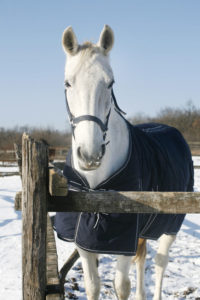
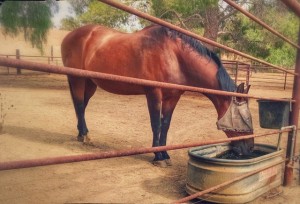
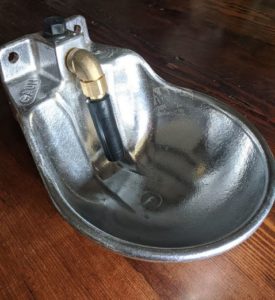




Nadine Ferguson says
I use a 100 gallon water trough for my two horses. Add a heater for the winter months works well I monitor the water usage by how many buckets fill the track every night.